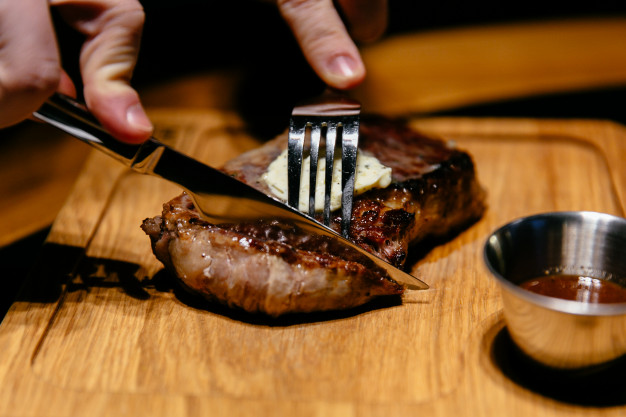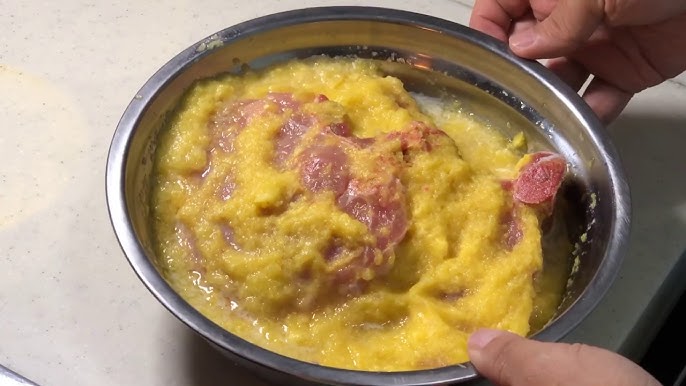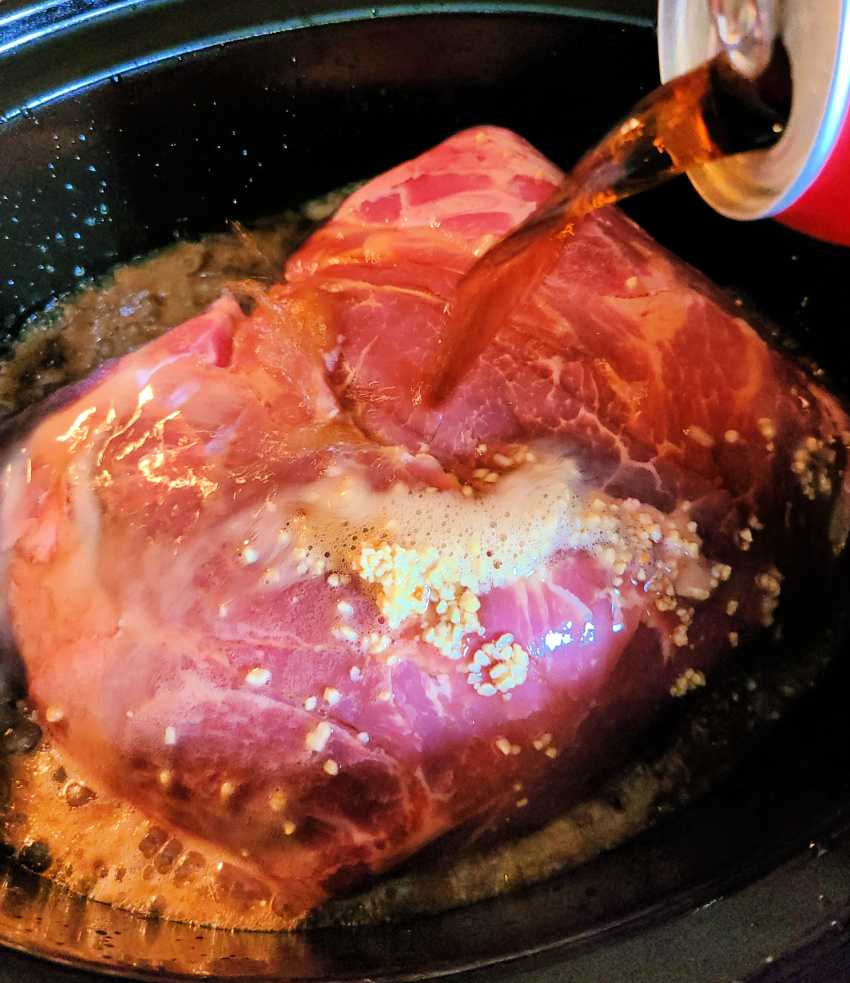
Tenderizing meat is a culinary technique that enhances the texture and flavor of various cuts, making them more enjoyable to eat. Using natural methods not only improves tenderness but also preserves the meat's flavor without the use of harsh chemicals or artificial tenderizers. If you're grilling steak, roasting chicken, or preparing pork, mastering the art of natural tenderization can elevate your cooking game and impress your guests.
In this article, you’ll learn about the science behind meat tenderness, 14 effective natural tenderizers, and easy steps to achieve the perfect texture every time. Say goodbye to tough, chewy meat and hello to succulent, flavorful dishes!
What Is Meat Tenderizer?
Meat tenderizers are substances or tools used to soften meat fibers, making the meat easier to chew and enhancing its overall flavor. They work by breaking down protein structures in the meat, which can be achieved through various means, including:
- Chemical Tenderizers: Often commercial products containing enzymes or acids that specifically target protein bonds.
- Natural Tenderizers: Substances derived from fruits, vegetables, or dairy that can achieve the same effect without chemicals.
Natural meat tenderizers offer a wholesome alternative, enhancing flavor while effectively breaking down tough fibers. The beauty of using natural methods is that they often bring additional flavors and moisture to the meat, making them a preferred choice for many cooks.
1. Marinades
Marinades are a popular method for tenderizing meat and enhancing flavor. They typically consist of an acidic ingredient, such as vinegar, citrus juice, or yogurt, combined with various herbs, spices, and oils. The acidity in marinades works to break down protein structures in the meat, making it more tender and flavorful. Use herbs for flavorto create a rich blend of tastes that elevates the dish and creates a more enjoyable eating experience.
For optimal results, marinate the meat for at least 30 minutes to several hours, depending on the cut. Tougher cuts, like flank steak or pork shoulder, can benefit from longer marination times, sometimes overnight. However, be cautious not to marinate for too long, especially with highly acidic marinades, as this can lead to an overly mushy texture. Always rinse excess marinade before cooking to prevent an overpowering flavor.
2. Salt
Salt is a powerful natural tenderizer and flavor enhancer that works through the process of brining. When salt is applied to meat, it draws out moisture and creates a brine that penetrates the meat fibers. This brine not only helps to soften the meat but also enhances its natural flavor, making it juicier and more delicious. Salt can be used both as a dry rub or in a brine solution, depending on the desired outcome.
To effectively tenderize meat with salt, sprinkle a generous amount on the surface and let it rest for at least an hour before cooking. For more substantial cuts, a longer resting period can enhance the brining effect, allowing the salt to work its way deeper into the meat. Rinse off excess salt before cooking to avoid over-seasoning, ensuring a well-balanced flavor profile.
3. Enzymatic Tenderizers
Certain fruits contain natural enzymes that are highly effective at tenderizing meat. Pineapple, papaya, and kiwi are particularly known for their tenderizing properties due to the enzymes bromelain, papain, and actinidin, respectively. These enzymes work by breaking down protein bonds in the meat, leading to a softer texture. This method is especially beneficial for tougher cuts that require more assistance in becoming tender.
To use enzymatic tenderizers, create a marinade using the pureed fruit or juice and apply it to the meat. It's essential to monitor marination times carefully, as prolonged exposure to these enzymes can lead to a mushy texture. Typically, 30 minutes to 2 hours is sufficient, depending on the cut of meat and the concentration of the enzyme in the fruit.
4. Mechanical Methods
Mechanical tenderization involves physically breaking down the meat fibers to improve tenderness. This can be done using a meat mallet, which pounds the meat to soften it, or by scoring the surface with a sharp knife. These techniques disrupt the muscle fibers and connective tissues, allowing marinades to penetrate more effectively and enhance tenderness.
Pounding or scoring is particularly useful for tougher cuts of meat like flank or round steak. When using a meat mallet, apply gentle but firm pressure to avoid over-tenderizing, which could result in a less desirable texture. Scoring the meat involves making shallow cuts across the surface, which not only helps in tenderization but also creates more surface area for flavor absorption.
5. Aging
Aging is a traditional method of improving the tenderness and flavor of meat. There are two primary types: dry aging and wet aging. Dry aging involves hanging the meat in a controlled, cool environment to allow natural enzymes to break down connective tissues over time. This process enhances the meat's flavor and tenderness, resulting in a richer taste and more succulent texture.
Wet aging, on the other hand, involves vacuum-sealing the meat and refrigerating it for several days to weeks. The meat retains its moisture, allowing it to age without drying out. Both methods can significantly enhance the tenderness of tougher cuts, but they require time and proper storage conditions to ensure food safety and optimal results.
6. Cooking Techniques
Certain cooking techniques naturally tenderize meat as they cook. Slow cooking, braising, and stewing involve cooking meat at low temperatures for extended periods, allowing collagen in tougher cuts to break down into gelatin. This process results in a tender and flavorful dish, perfect for comfort foods like pot roasts and stews.
When using these methods, it's essential to keep the meat moist by adding liquid such as broth, wine, or sauce. This not only helps in the tenderization process but also enhances the overall flavor of the dish. Cooking meat slowly ensures that even the toughest cuts become melt-in-your-mouth tender, making them perfect for hearty meals.
7. Resting After Cooking
Resting meat after cooking is a crucial step that is often overlooked. When meat is cooked, the juices are pushed toward the center due to the heat. Allowing the meat to rest for a few minutes after cooking helps redistribute these juices throughout the meat, enhancing its tenderness and flavor. This practice is vital for all cuts of meat, from steaks to roasts.
Typically, resting meat for about 5-15 minutes, depending on the size of the cut, is sufficient. Cover the meat loosely with foil to keep it warm while it rests. This simple step can make a significant difference in the texture and juiciness of the finished dish, ensuring a more enjoyable eating experience.
8. Milk Or Dairy Products
Dairy products, particularly milk and yogurt, can effectively tenderize meat due to their mild acidity and enzymes. The lactic acid in dairy helps to break down protein fibers, resulting in a more tender and flavorful final product. This method is especially popular in marinades for chicken and pork, as the creaminess can also add richness to the dish.
To use dairy for tenderizing, marinate the meat in buttermilkor yogurt for a few hours to overnight. The key is to balance the marinating time; while dairy is effective, leaving meat in a dairy marinade for too long can result in an overly soft texture. Rinse off excess dairy before cooking to avoid a heavy flavor.
9. Baking Soda
Baking soda is another effective natural tenderizer that alters the pH balance of the meat, making it more tender. By raising the pH level, baking soda helps to break down protein bonds, which results in a softer texture. This method works particularly well for tougher cuts that require more assistance in becoming tender.
To use baking soda, sprinkle a small amount over the meat and let it sit for about 15-20 minutes. Afterward, rinse the meat thoroughly to remove any residue, as leaving baking soda on can result in a soapy flavor. This quick and simple method can make a significant difference in the tenderness of the finished dish.
10. Beer Or Wine
Using beer or wine as a marinade can also act as a natural tenderizer. The acidity found in these beverages helps to break down protein structures in the meat, resulting in a more tender final product. Additionally, beer and wine add rich flavors that enhance the overall taste of the dish.
To use this method, mix beer or wine with herbs, spices, and other marinade ingredients. Marinate the meat for at least 30 minutes or up to several hours, depending on the cut. The alcohol will evaporate during cooking, leaving behind a tender and flavorful piece of meat.
11. Ginger
Ginger contains a natural enzyme called zingibain, which has the ability to tenderize meat effectively. This enzyme works by breaking down protein fibers, similar to how other enzymatic tenderizers function. In addition to its tenderizing properties, ginger adds a unique flavor profile that can enhance various meat dishes, making it an easy dinner recipeoption that elevates your meal without much prep time.
To incorporate ginger as a tenderizer, grate fresh ginger and mix it into a marinade or rub it directly onto the meat. Allow the meat to marinate for at least 30 minutes before cooking. Be cautious with timing, as prolonged exposure to ginger can lead to overly soft meat.
12. Onion
Onions are not only a flavorful ingredient in many dishes but also act as a natural tenderizer. They contain enzymes that break down protein fibers, helping to soften the meat. Additionally, onions can enhance the overall flavor of the dish, making them a great choice for marinades and cooking.
To use onion for tenderization, you can either chop them finely and mix them into a marinade or extract onion juice to coat the meat. Allow the meat to sit in the onion mixture for at least an hour before cooking. This method not only tenderizes the meat but also infuses it with a rich, aromatic flavor.
13. Cola
Cola is an unexpected yet effective natural meat tenderizer due to its acidity and carbonation. The phosphoric acid in cola helps break down proteins, making the meat more tender. Additionally, the sugars in cola can contribute to caramelization during cooking, enhancing the flavor profile and creating a delicious crust on the meat.
To use cola as a tenderizer, marinate the meat in cola for at least 30 minutes to several hours, depending on the cut. This method works well with chicken and pork, imparting a sweet and tangy flavor that complements various seasonings. However, be cautious not to marinate for too long, as the sugars can cause the meat to become overly sweet or mushy.
14. Coffee
Coffee is another surprising natural tenderizer, thanks to its acidic properties and rich flavors. The acidity in coffee helps break down tough muscle fibers, making it an excellent choice for marinating beef and pork. In addition to tenderizing, coffee adds a unique depth of flavor, enhancing the overall dish with its complex notes. Using coffee in this way can help you become a cooking proby adding layers of flavor that elevate simple recipes to restaurant-quality meals.
To use coffee as a tenderizer, brew a strong cup and allow it to cool. Combine it with spices and other marinade ingredients, then soak the meat for at least 30 minutes to a few hours. The result is tender, flavorful meat that carries the rich essence of coffee, perfect for grilling or roasting.
Steps To Tenderize Meat Naturally
Follow these simple steps to effectively tenderize your meat using natural methods:
- Choose Your Method: Decide on which natural tenderizer suits your recipe and the type of meat you’re using.
- Prepare the Tenderizer: If using a marinade, mix your chosen acidic ingredients, spices, and herbs in a bowl. For enzymatic tenderizers, prepare fruit purees or juices.
- Apply the Tenderizer: Coat the meat evenly with the marinade or rub it with the chosen tenderizer. If using mechanical methods, pound or score the meat as needed.
- Allow Time to Tenderize: Let the meat sit for the appropriate time, depending on the method (e.g., marinate for 30 minutes to overnight, rest for 5-15 minutes after cooking).
- Cook the Meat: Use your preferred cooking method, keeping in mind that low and slow techniques will yield the best results for tenderness.
- Rest Before Serving: Always let the meat rest after cooking to maximize juiciness and tenderness.
Can I Use A Meat Tenderizer Tool?
Mechanical meat tenderizer tools can be effective in breaking down tough muscle fibers. These tools come in various forms, such as mallets or specialized tenderizing gadgets with sharp bladesthat penetrate the meat.
- Benefits: Using a tenderizer tool can quickly soften the meat without the need for lengthy marination times. It's particularly useful for tough cuts like flank or round steak.
- When to Use: If you're short on time, a meat tenderizer tool can be a practical choice. However, combining this with natural tenderizers will yield the best flavor and tenderness.
Tips For Best Results
To ensure optimal results when tenderizing meat naturally, keep these tips in mind:
- Select the Right Cut: Tougher cuts of meat (like chuck, flank, or round) benefit more from tenderizing techniques than naturally tender cuts (like tenderloin or ribeye).
- Timing Matters: Be cautious with marination times; too long can result in mushy meat. Typically, 30 minutes to 2 hours is ideal for most methods.
- Taste Before Serving: After cooking, always taste the meat before serving. Adjust seasoning as necessary to complement the natural flavors brought out by the tenderizing process.
FAQs
What Is The Best Natural Tenderizer For Tough Cuts Of Meat?
The best natural tenderizer for tough cuts is often a marinade containing acidic ingredients like vinegar or citrus juices. Enzymatic tenderizers like pineapple or papaya also work well.
How Long Should I Marinate Meat To Ensure Tenderness?
Marinating times vary based on the method used and the type of meat. Generally, 30 minutes to overnight is sufficient, but tougher cuts may benefit from longer marination.
Can You Over-tenderize Meat?
Yes, over-tenderizing can lead to a mushy texture. It's essential to follow recommended marinating times, especially with enzymatic tenderizers.
What Cuts Of Meat Benefit The Most From Natural Tenderizing Methods?
Cuts like flank, round, chuck, and brisket are tougher and benefit significantly from natural tenderizing methods, whereas tender cuts need less intervention.
Are There Any Herbs That Help In Tenderizing Meat?
While herbs themselves are not direct tenderizers, some, like ginger and papaya, contain enzymes that aid in tenderizing. Incorporating herbs into marinades enhances flavor while complementing tenderizing effects.
Conclusion
Mastering the art of tenderizing meat naturally not only enhances flavor but also improves the overall dining experience. With various methods at your disposal from marinades and mechanical tenderizers to the use of natural enzymes, any cut of meat can become tender and juicy. Embrace these techniques to elevate your cooking and enjoy the delicious results they bring.

